Blue-headed Vireo
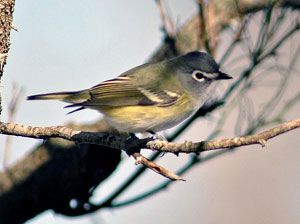
© Wayne Wendel
Vireo solitarius
Family: (Vireonidae) Vireos
Preferred Habitat: Woodlands
Seasonal Occurrence: Common November through March. Lesser numbers in October and April
Profile by Meghan Anne: The Blue-headed Vireo winters in the southeast US including the southeast portion of Texas. It breeds throughout most of Canada, and between New England and northern Georgia in the US. The identification of the Blue-headed Vireo is as straightforward as the name implies. It has a blue-gray head with white spectacles, yellowish flanks, a white belly and two white wing bars.
This vireo was previously lumped with Plumbeous and Cassin's Vireo as one species, called the Solitary Vireo. The Blue-headed Vireo is the most brightly colored of the three and is the only one that resides in the eastern US. As their previous common (and current scientific) name indicates, they are often found alone and will be foraging methodically for insects in the middle to upper levels of trees. In the winter they also add small berries and fruits to make up more than a quarter of their diet. Their habitat is mixed conifer-deciduous forest and in the winter they are found regularly at our Edith L. Moore Nature Sanctuary and High Island sanctuaries.
Profile by Glenn Olsen: Winter on the Upper Texas Coast is such a wonderful season for birding. Cool weather, only a few mosquitos, and lots of awesome birds. One of my favorite wintering birds is the Blue-headed Vireo. You are most likely to find this uncommon bird hopping ever so slowly and deliberately from limb to limb in a tree as it searches for insect eggs or a lethargic insect. The white around the eye that extends to the base of the bill is quite prominent and gives the bird the appearance of wearing eyeglasses. We refer to this pattern of white as spectacles. The white of the spectacles is accented by the contrast of the soft, faded blue color of the crown and cheeks making for a distinctive head pattern. Dull olive greenish back and wings with two dull white wing bars, white chin, throat, and belly with flanks washed in yellow complete the attire of this dashingly handsome bird.
Prior to 1997 this species was a member of a three-bird group referred to as the Solitary Vireo complex. After the three were split into separate species based on DNA studies we now have the Blue-headed Vireo (V. solitarius), the Plumbeous (V. plumbeus) and Cassin's (V. cassinii).
The Blue-headed Vireo winters in the southeastern states and Mexico. It is most common in our area from early November to early March. The breeding range is primarily Canada but also includes states around the Great Lakes, the New England States, and the Appalachian Mountains.
As the species name implies, I do not recall ever seeing two or more together. However, I think it well worth a day spent searching the trees for one of these colorful, handsome and uncommon birds. I will look for you when I am out searching for one myself.
Profile by Grace Yaros: Blue-headed Vireos are small, colorful songbirds that can commonly be found along the Upper Texas Coast during winter and migration. Aptly named, they have steely blue-gray heads that contrast with their greenish backs and yellow sides. They are white underneath, and have bold white markings around and in front of their eyes, giving them a spectacled appearance. Their bills are short and thick, with a small hook at the tip.
These handsome vireos breed in a variety of forest types from central-south Canada east to New England and along the Appalachians and spend the winter months from the southeastern U.S. to northern Nicaragua. They feed primarily on insects and spiders, though they will also eat some fruits. Their song is a series of short, high-pitched phrases that is similar to the song of a Red-eyed Vireo but has longer pauses between each phrase.
Blue-headed Vireos can be seen around Houston during the fall, winter and spring. They can be found in nearly any wooded habitat and can often be found in mixed foraging flocks alongside warblers and kinglets. They may be found in any of the Houston Audubon sanctuaries in High Island, including Smith Oaks Bird Sanctuary and Boy Scout Woods Bird Sanctuary, as well as Texas Ornithological Society’s Hooks Woods Sanctuary. They can also be seen at Edith L. Moore Nature Sanctuary in west Houston.
-
Cornell Lab of Ornithology
-
Bird Guide
-
Bird Library
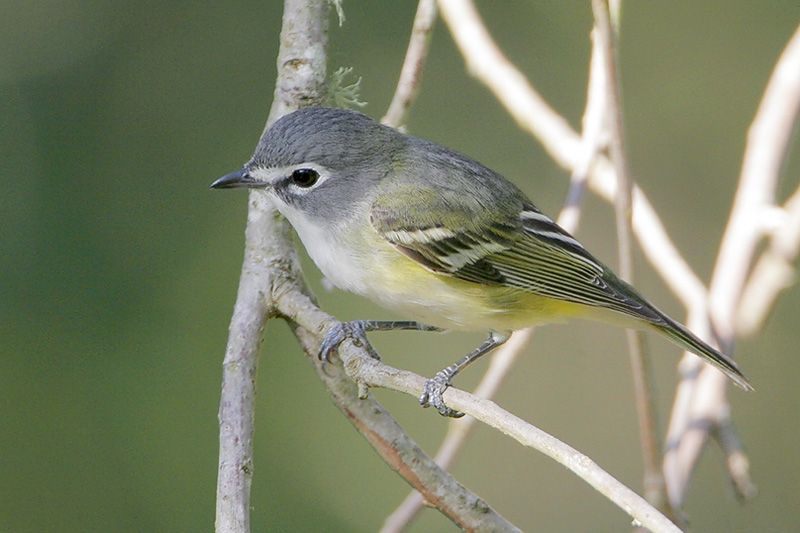
© Greg Lavaty, www.texastargetbirds.com
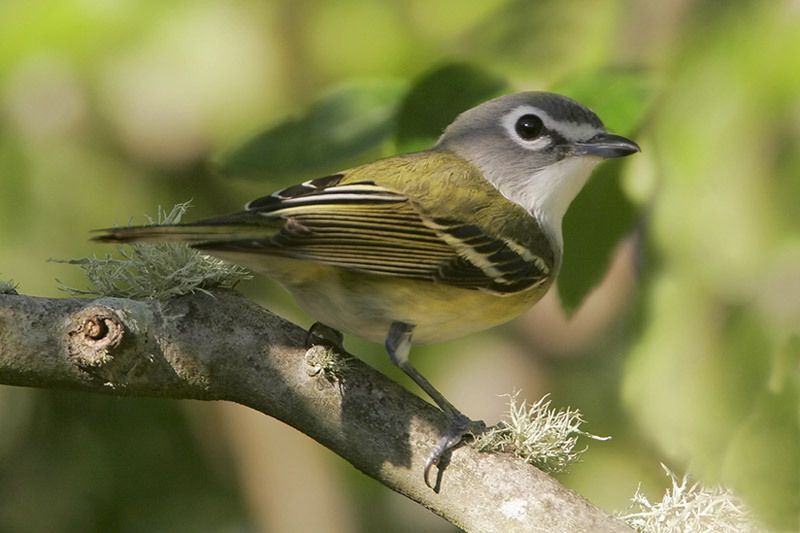
© Greg Lavaty, www.texastargetbirds.com
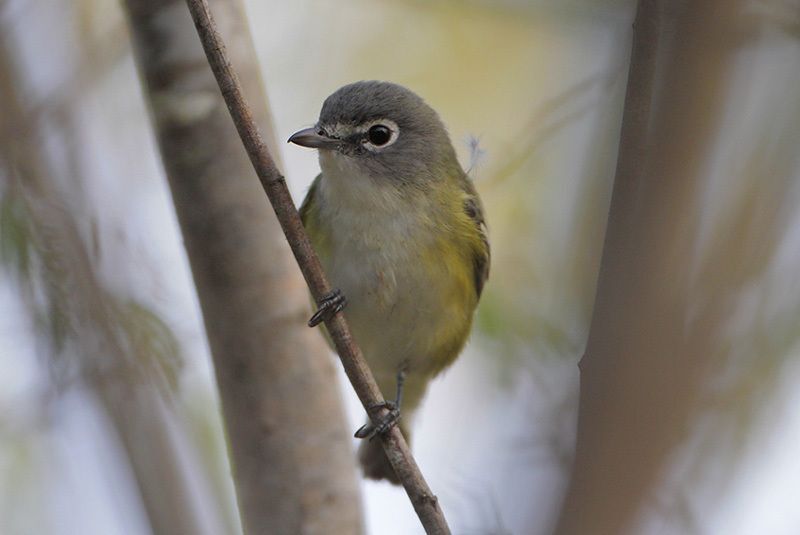
© Greg Lavaty, www.texastargetbirds.com
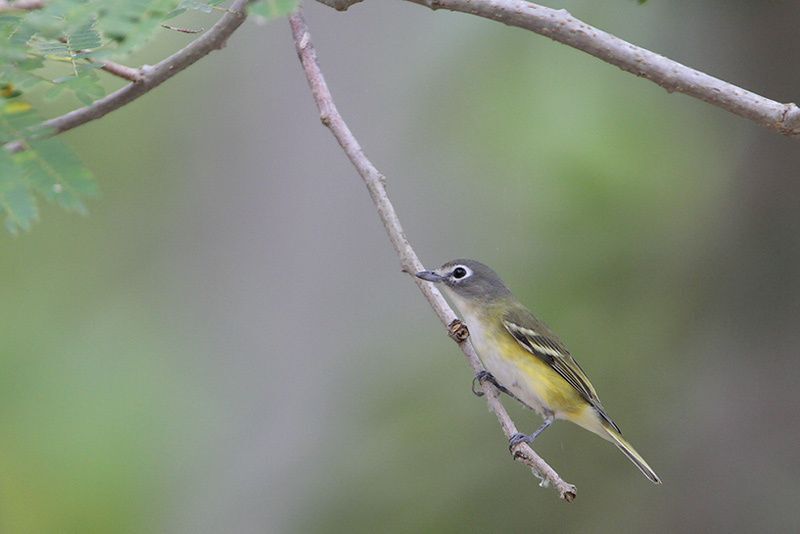
© Greg Lavaty, www.texastargetbirds.com




















